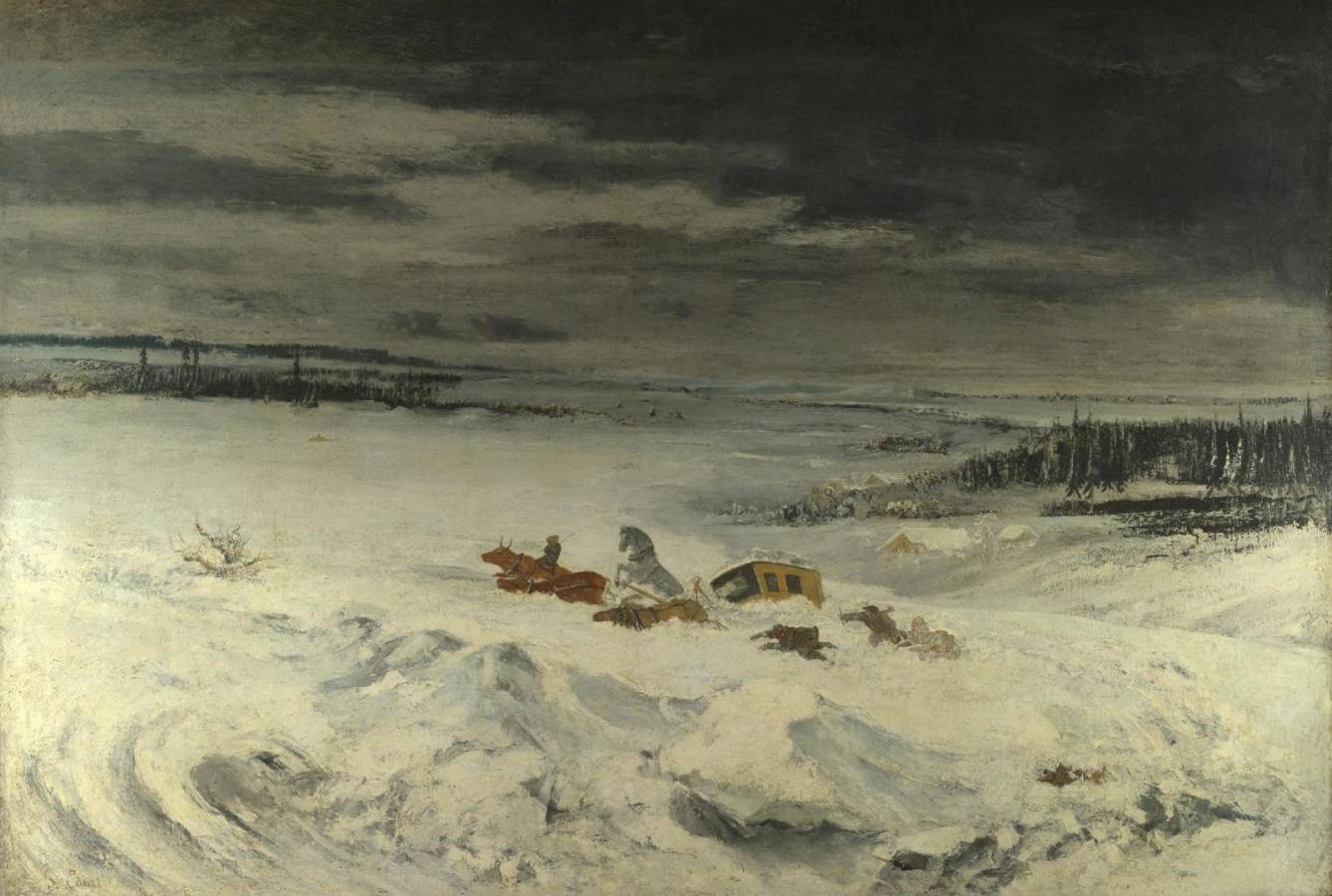Courbet, Gustave (1819-1877)
La diligence dans la neige (The Diligence in the Snow)
1860
Oil on canvas, 137.2 × 199.1 cm
National Gallery, London
The high viewpoint in this painting opens up the prospect of the vast distance, heightening its very real feeling of terror – yet the viewpoint also places us at a safe distance from the scene, without it losing its hold. The chaos of the overturned coach, the rearing horse and the bodies flailing about in the snow is matched only by the fear of the empty, impassive expanse of forest from which no help will come. The oxen hitched up to help the two horses make no progress in spite of the whip of their rider, and one of the horses rolls helpless in the snow, watched from the coach by an anxious passenger.
The trees of the forest are stark and frozen; the few abandoned chalets lay half buried, made ghostly by the frosty light. Overhead the clouds darken and thicken; more snow and yet more snow is on its way. The deep ravine that has caused the disaster is bounded in the foreground by huge, sharp rocks that glisten under a coating of fresh, crisp snow.
The painting was originally entitled Naufrage dans le Neige, or Shipwreck in the Snow. It is said to have been based on a real accident that Courbet witnessed during a hunting expedition in the Livier Forest in the Haut Jura, an area in the east of France. The forest is not far from Ornans, where the artist was born and to which he often returned. Courbet’s own life was stormy and sometimes catastrophic, since his stubborn insistence on the painting of reality, however disturbing, was greeted by public and critics with divided enthusiasm. At times he was very successful, but he always caused outrage in some quarters, with paintings such as Young Ladies on the Banks of the Seine and Burial at Ornans (Musée d’Orsay, Paris). But his land and seascapes and his scenes in the snow were always popular because of their colour and atmosphere, their immediacy and truth to life.
Courbet’s use of the palette knife in preference to, but not entirely replacing, brushes wasn’t just a question of his wish to create heavy, descriptive impasto. It was a way of showing his disdain for the smooth surfaces of the work of contemporary academic artists, such as the neo-classical painter Ingres in his Oedipus and the Sphinx. The Diligence in the Snow reveals Courbet painting at his most vivid and energetic. White paint for the rocks and snow is heaped on, smoothed or scraped back with a palette knife; the forest is depicted with a dry brush drawn through a layer of black paint on white. He painted several snow scenes and became an acknowledged master of the genre, capturing the light and brilliance of a landscape under snow. They all give a palpable feeling of icy cold, although not, perhaps, the feeling of human powerlessness against the strength and implacability of nature that this one carries. (NG)
